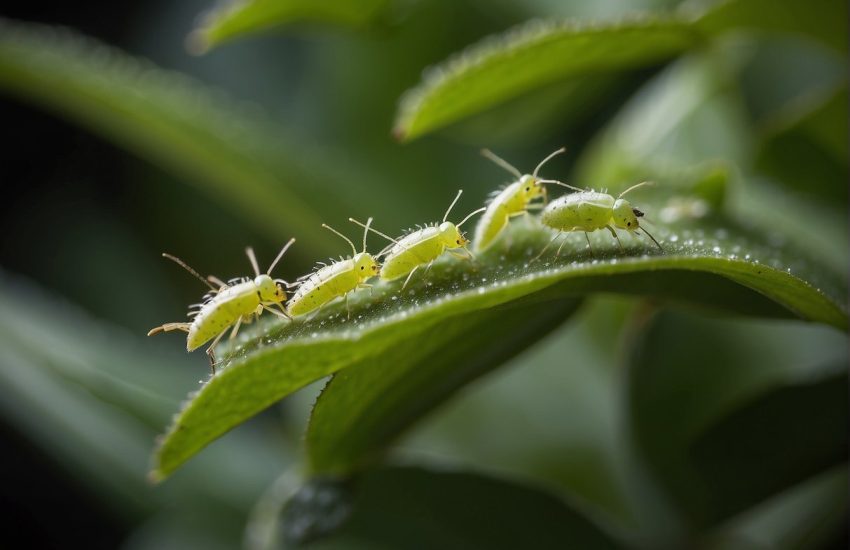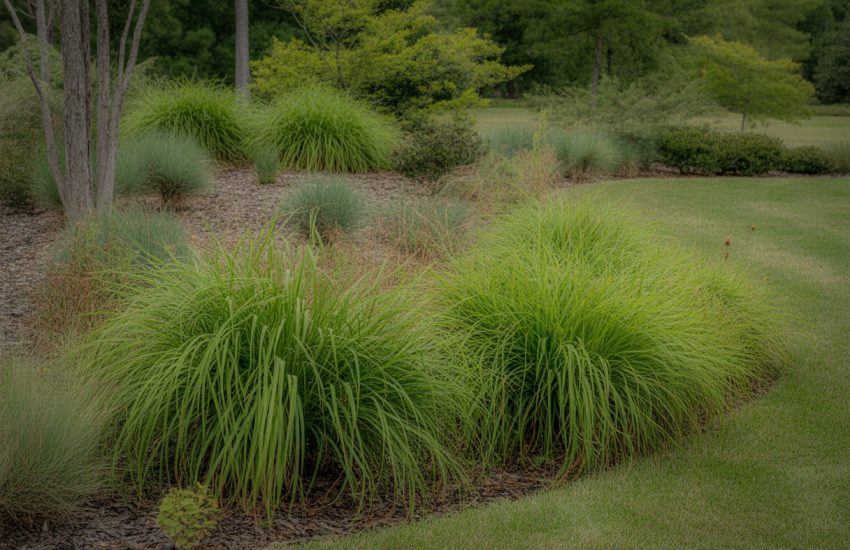Connecticut Native Plants for Landscaping [with Pictures]
Connecticut is home to many native plants that have adapted to the changing conditions of the Connecticut environment and suitable for use in landscaping.
Connecticut Native Trees
1. White Oak (Quercus Alba)
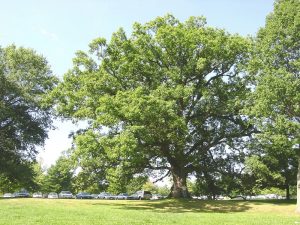
The white oak tree is also known as the Charter Oak. It is the most common tree in Connecticut and is mainly referred to as the state tree. Although it is often seen with a crown width of around 30 feet, the white oak may reach heights of up to 80 feet and a spread of about 40 feet.
They may be identified by their leaves, which converge at a single point as opposed to having lobes like the red oak. Along with having a white, furrowed bark, they also have velvety top leaf surfaces. The white Oak acorns are tiny and sessile without a stalk.
2. Red Maple (Acer Rubrum)
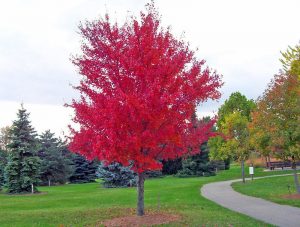
Red maples are a common sight in Connecticut, where they grow to heights of up to 115 feet tall. They are generally found near streams and rivers, as they need wet roots to survive. Red maples flower from September through October, making them one of the first trees to bloom after winter.
It is often called soft maple because its thin bark strips off easily without damaging the tree or leaving scars. The leaves turn red or yellow before falling during the autumn months. When crushed, those leaves may release a sweet smell similar to vanilla flavoring, which attracts deer who browse these tasty treats all winter long.
3. Black / Sweet Birch (Betula Lenta)
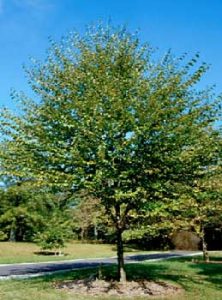
Betula lenta, also known as sweet birch or black birch, is a deciduous tree native to eastern North America. As a member of the Betulaceae family, it is identifiable by its alternate leaves and divided bark which looks similar to oak. It typically reaches heights between 10 and 35 meters, with trunk diameters reaching up to 1.5 meters. The red inner bark of B. lenta has been used traditionally by Native American tribes for stomach illnesses, while the wood has been used for cooking fires and smoking meats because of its slow-burning properties.
4. Eastern Hemlock (Tsuga Canadensis)
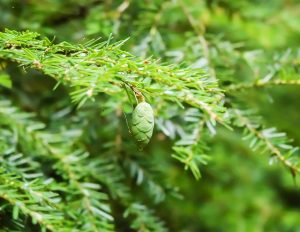
Eastern hemlock is a large evergreen tree, part of the pine family. These trees are often found in landscapes, parks, and ornamental trees. The needles of this tree are generally light green but are sometimes blue-green to dark green.
5. Northern Red Oak (Quercus Rubra)

Northern Red Oak is a variety of oak native to the United States, particularly in Connecticut, usually found in moist areas such as floodplains and riverbanks. It prefers partial shade or dappled sunlight, making it popular in urban landscapes. Like other oaks, it has large leaves forming an acorn cup. The species name “rubra” comes from Latin and means “red.” Northern Red Oak is also known as Swamp White Oak.
The most important feature of red oak is its outstanding growth rate — at maturity, it can reach up to 75 feet tall. It is also noted for its dark red autumn coloration and the fact that it does not drop its leaves until after spring and summer are over. Northern red oak is quick to grow but dense; unlike other oaks, it is less tolerant of droughts or moist conditions. Northern red oak can live 200 years or more and remains green all winter, while other oaks have a tendency to lose their leaves in winter or early spring.
6. American Beech (Fagus Grandifolia)
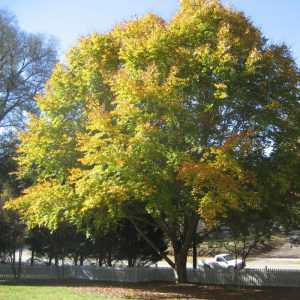
The American beech, Fagus grandifolia, is a deciduous tree native to Connecticut state. The tree can grow up to 30 meters tall and has smooth green bark with brownish-gray lenticels that split as the leaves develop. An open crown of large branches typically reaches out from a roughly pyramidal stem covered with either smooth or scaly buds, which are generally thickest lower on the trunk and thin towards the apex of branches. The leaves are deeply lobed and have serrated edges; they vary in shape from oval to lanceolate and are 3–9 centimeters long by 1–4 cm wide.
7. Eastern White Pine
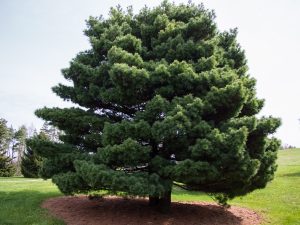
Eastern White Pine is a tall evergreen tree native to Connecticut state and southeastern Canada. The needles are in fascicles of three, and their cones are long, slender, and pointed at the tip. It’s one of two species from the white pine group (Pinus) that occur in eastern North America-the other being Eastern Red Cedar (Pinus resinosa).
When it grows north of 41°N latitude, it can be distinguished from Western White Pine by its shorter needles.
8. Black Cherry (Prunus Serotina)
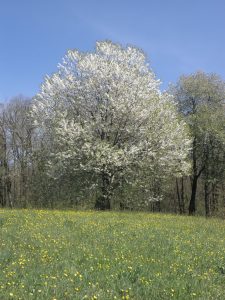
The black cherry tree is a deciduous species that grows in zones 4-8. It blooms white flowers and produces red fruit. Its leaves are ovate and have toothed edges, which can be used for medicinal purposes. The tree’s bark is fuzzy and grayish, with horizontal lines of ridges that grow more prominent with age.
The black cherry is a typical landscape tree planted for its beautiful flowers, which appear when the tree is still leafless or just starting to come into bud. They can be used to make a syrup or tea called erva da panela that induces sweating and helps relieve fever.
9. Pignut Hickory (Carya Glabra)
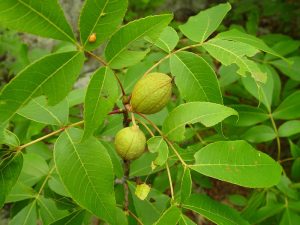
Pignut hickory is a deciduous tree that is found mostly in Connecticut state and also in Texas. It can grow to heights of 80 feet tall, has a trunk diameter of 30 inches, and leaves out after other trees in the springtime.
It produces an edible nut that has a sweet taste when roasted, about 3″ long, with an oily kernel inside that does not turn rancid as quickly as other nuts because the oil content is low (about 10% by weight).
10. White Ash (Fraxinus Americana)
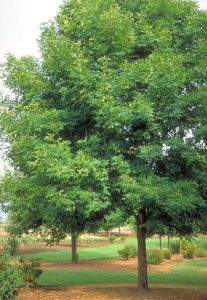
White Ash (Fraxinus Americana) is an evergreen tree native to Connecticut State. The White Ash is a medium-sized tree that grows in height to 20 meters and typically lives from 50 to 100 years. Its diameter can vary from 1.5 – 4 meters, with a trunk that measures up to 30 centimeters at the base of the crown. The White Ashen’s bark is thin and smooth, typically white but with some very light brown streaks or patches. This bark helps it blend into its surroundings and allows it to survive woodlands where its seeds are more likely to be eaten by birds than other trees’.
11. Eastern Redbud (Cercis Canadensis)
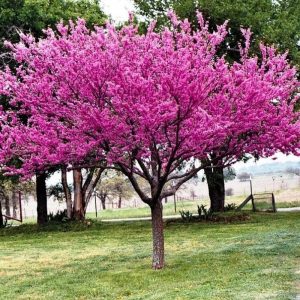
Eastern Redbud is a type of redbud tree with yellow flowers that blooms in the fall. The Eastern redbud is native to Connecticut State and grows up to 38 feet tall with a trunk diameter of 20-27 inches. The leaves are opposite on branches arranged near the tops of the tree’s main stem, while its twigs are covered with shiny silver hairs. This plant is hardy and can endure temperatures as low as -20 degrees Fahrenheit before any frost damage occurs. It is found in many different soil types, including acid and clayey soils.
12. Smooth Sumac (Rhus Glabra)

Smooth sumac, also known as velvet sumac, is an erect shrub that is found in forests and fields throughout Connecticut State. This plant can grow up to 10 feet tall and produces clusters of orange-red fruits in late summer. These ripen into a beautiful scarlet color before they fall to the ground. The leaves turn yellow, red, and orange before turning a smooth brown in autumn. Hikers should be mindful of this plant when learning which plants are poisonous and which are not because there have been cases of confusion between these two varieties in the past.
13. Hawthorn (Crataegus Viridis)
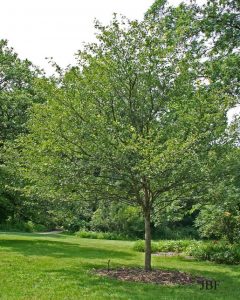
The Hawthorn is a very common, well-known tree that’s primarily found in Connecticut State. It can be either white, yellow, or purple. Those who use the leaves and flowers of the Hawthorn as medicines typically find them useful in treating asthma, bronchitis, coughs, colds, and flu symptoms. In addition to these medicinal benefits, its roots are also used in traditional Chinese medicine to relieve muscle pain and inflammation.
Additionally, many people enjoy harvesting hawthorns themselves as they’re easy to grow into beautiful trees with a bright look and are good for landscaping purposes. The tree is great for landscaping since it adapts well to a variety of soil, produces pretty flowers and berries, and does not require much water to survive.
14. Tupelo/Sour Gum (Nyssa Sylvatica)
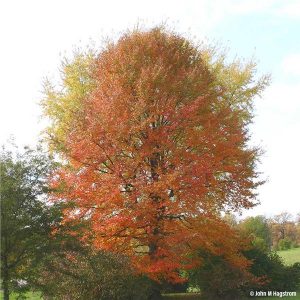
Tupelo/Sour Gum is a tall tree that grows in both the wet, swampy bottomlands and dry ridges of Connecticut States. Tupelo is best known for its sweet sap, making some amazing iced tea. It also has uniquely beautiful bark that features deep ridges and a silvery-white to tan coloration.
The tree stores water in its thick tangle of roots, which helps it survive in less hospitable habitats than other trees could manage to live through. Its roots grow close to the surface and are more likely to be exposed during droughts or hurricanes than other trees with shallower root systems.
15. Sugar Maple (Acer Saccharum)
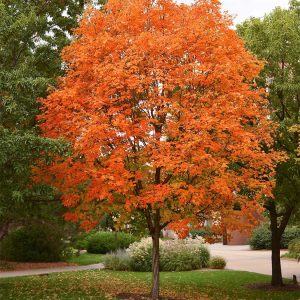
Maple trees produce yellowish flowers in late winter, which are small in size, and hang in clusters on short stalks originating from the branches or twigs. The fruits of the sugar maple tree come in two types: winged samaras (or keys) and samaras that stay on the branch until they fall off unpredictably throughout fall and winter. Growth occurs after the vernal equinox when the days lengthen to 12 hours each day.
Acorns, the leaves of a maple tree, are compound (palmate) with 5-9 obovate-oblong lanceolate leaflets. The twigs of the sugar maple tree have an opposite arrangement. This tree is resistant to infestations because of its natural defense mechanisms, and humans have also cultivated it for centuries due to its unique sweet sap.
Connecticut Native Perennials
1. Pearly Everlasting (Anaphalis margaritacca)
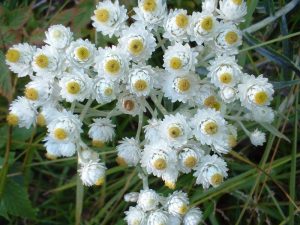
The Pearly Everlasting (Anaphalis margaritacca) is a plant in the family Asteraceae that grows as an annual to perennial herbaceous plant. It can grow to 1–1.5 meters (3.3–4.9 ft) tall and has lanceolate leaves up to 45 cm (18 in) long, with clusters of small white flowers that bloom from summer until autumn, depending on location. The flowers are usually arranged along the flower stalk with only a few flowers growing at the top of it and are followed by oval-shaped silvery fruit. The Pearly Everlasting grows best in full sun to partial shade with moist soil has good drainage. It can be propagated by seed or through the division of clumps.
2. Wild Red Columbine (Aquilegia canadensis)
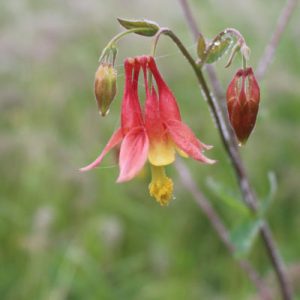
Wild red columbines are an iconic wildflower. Their large, bright flower heads can be found growing throughout the Rocky Mountains in mid-summer. The genus Aquilegia is comprised of over 140 species and thousands of cultivars. The flowers are usually red and can grow to 2 inches wide.
Columbine leaves vary in size between species but may be smooth or toothed margins on long petioles that can reach 3 feet in length. All genus members have yellow centers that wither and disappear with age, while the petals stay fresh until they fall off during fall movement or frost damage.
3. Swamp Milkweed (Asclepias incarnata)
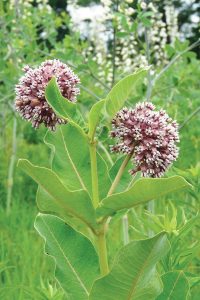
The Swamp Milkweed is a plant of the Asclepiadaceae family. It is also known as Swamp Lily, Hardstem Milkweed, or Swampsilk. This plant has a cosmopolitan distribution, meaning that it can be found throughout most regions of North America. It grows in wetlands, and just about every pH range from 5 to 8. The swamp milkweed gets its name from the characteristic pink flowers that appear in early spring through fall. The flowers are indicative of their close relationship with the common milkweed (Asclepias syriaca).
4. Smooth Aster (Aster laevis)
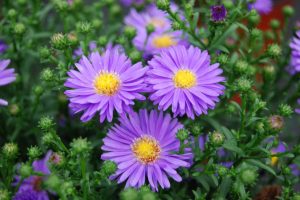
Aster laevis” is a species of flowering plant in the aster family, native to the State of Connecticut. It yields a white or yellow flower that is found in clumps on short stems. The name “smooth aster” refers to the velvety leaves and flowers, as well as the downy covering on parts of its flower head. The smooth aster should not be confused with “Aster linifolius,” which is more commonly known as Growsia Grandiflora, sometimes referred to as Smooth Aster because of its leaves and velvety stem ends.
5. New England Aster (Aster novae-angliae)
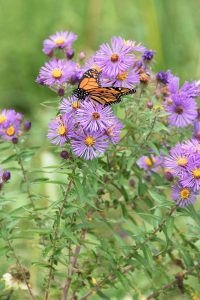
New England Aster (Aster novae-angliae) is a plant in the genus Aster belonging to the family Compositae. The name derives from the Latin nova, meaning “new.” It is found in Europe, Asia, and Connecticut State. New England Aster is a diploid, having two sets of chromosomes. This species of aster has between six and nine daisy-like flower heads with golden rays surrounding each head on both sides. These flowers have white or greenish centers and are usually one to three inches wide. A common name for this plant is “Goldsmith’s Gold” or “Goldfinch’s Gold”.
6. Marsh Marigold (Caltha palustris)
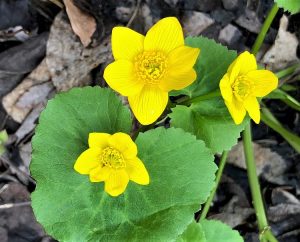
Marsh marigold thrive in moist soil and are often found in alders, cranberry bogs, beaver ponds, and other wet places. These interesting plants have the unique ability to grow prostrate on the ground with shoots that stand upright above ground to produce flowers. The marsh marigold is an attractive plant often grown as a garden subject, although it can be invasive if planted outside its natural range.
Marsh Marigold prefers full sun or light shades, and they grow from 8 to 12 inches tall. The flowers can have from 59 to over 100 stamens.
7. Boneset (Eupatorium perfoliatum)
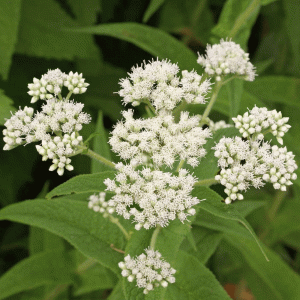
Boneset is a perennial herb that can grow to a height of four feet. The leaves are heart-shaped, coarsely toothed, and often patterned with white spots. The flowers are small and come grouped in clusters, growing at the tops of the twigs. Boneset was used as a medicinal plant by Native Americans and, in other regions, served as an important cash crop because it was believed to have medicinal qualities that helped alleviate fevers and pain.
The composition of the essential oils found in Eupatorium perfoliatum varies depending on the region and the collected habitat. Chemical compounds found within this plant include triacetin, tannins, flavonoids, and essential oil. Boneset has a bitter taste which is caused by the presence of a glucoside named perfoliate. This glucoside is toxic when consumed because it causes vomiting and hemolysis within red blood cells.
8. Pale-leaved Sunflower (Helianthus strumosus)
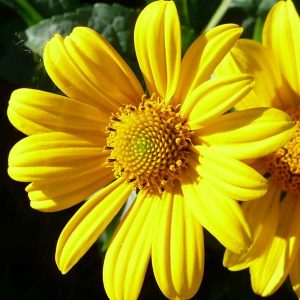
The Pale-leaved Sunflower (Helianthus strumosus) is a perennial with a tall and robust habit, native to eastern North America. This sunflower has large, creamy-yellow blooms that turn brown as they age. The plant leaves are covered in small hairs and often have red veins.
Pale-leaved Sunflower is a perennial, herbaceous plant that grows from 1 to 3 meters tall. It has broad, alternate leaves (20–60 cm long and 9–25 cm wide) covered with short hairs and has an odor like potatoes when crushed. The stems are green or red and may be either square (e.g., in “H. strumosus”) or round in cross-section (“H. petiolaris”). The leaves are arranged opposite each other on the stem, with their bases clasping the stem.
9. Cardinal Flower (Lobelia cardinalis)
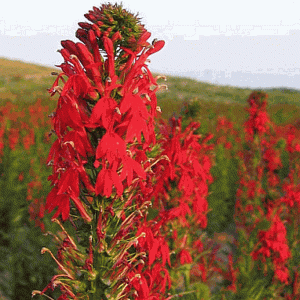
Lobelia cardinalis is a perennial plant in the Campanulaceae family that typically grows to 3-4′ tall. The meaning of its Latin name, Lobelia Cardinalis, is unclear, but it may refer to the distinctive red color of its flowers.
The lobelias are a genus of herbs and shrubs native to North America. With over 200 species found worldwide, they make up one of the largest plant families with 13 genera and 40 subtribes. Lobelias are typically characterized by opposite leaves and showy flowers with five lobes which can be either yellow or bright red – such as on common garden species Lobelia cardinalis.
Connecticut Native Shrubs
1. Amorpha Fruticosa (indigo Brush)
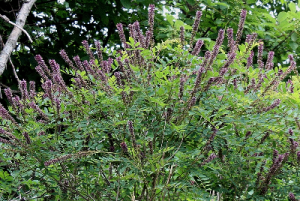
Amorpha fruticosa, commonly known as the indigo brush or the blue tassel sedge, is a species of sedge that grows in damp areas in Connecticut State. It is a herbaceous shrub that can grow to heights of up to 3 ft (1 m).
The leaves of the indigo brush grow up to 2.5 inches long, with smaller leaves appearing as “tassels” around the stem at nodes. The tassel-like growths are clusters of leaves that have grown near each other and appear to be one leaf because they are tightly packed together. These leaves are scales of the flowering structure made up of stems and florets, which is known as a spikelet. The spikelets occur in clusters at the ends of a stalk known as an inflorescence, and each flowering spikelet contains two types of florets: male and female.
2. Sambucu recemosa (Red Elderberry)
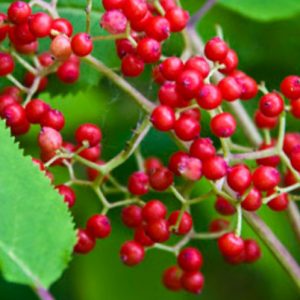
Foeniculum vulgare “sambucu” is a shrub that bears large, blossom-less, dark red bell-shaped berries. Its roots contain the antioxidant compound sambubioside and are a rich source of rutin. The berries may be used as a dye and are traditionally used to make jam. Berries of other members of this genus can also be used to make jams, syrups, and wines.
The plant species is widely cultivated in Europe and in some parts of Connecticut State for its flowers, from which it gets its name Sambucus nigra (black elder).
3. Rhus typhina (staghorn Sumac)
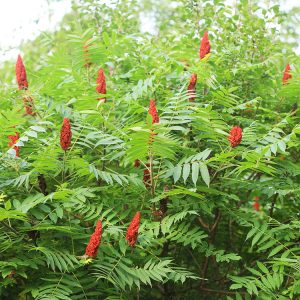
Staghorn Sumac is a deciduous tree that grows up to 30 feet tall. It has smooth, glossy leaves and clusters of small white flowers that bloom profusely in the spring. Leaves are orange-red in autumn and turn yellow with age. The plant is native to Connecticut State but can also be found growing in Europe and Asia. This plant produces large amounts of berries the size of large cherries that are filled with astringent juice when they ripen during the fall season.
Sumacs have very fragrant, sweet-smelling flowers that bloom in the spring. The fruit is called a sumac berry and is commonly used in cooking and medicine.
Staghorn Sumac contains the toxic compound protocatechuic acid (PCA), which, depending on dosage, can cause liver failure, convulsions, and death in humans. For this reason, it should be handled with extreme care. It also produces a toxin called “tahatol” that inhibits the production of human enzymes or protein synthesis. These toxins are concentrated by the plant’s reliance on nitrogen-fixing bacteria to produce tissues from carbon dioxide via photosynthesis. Yields of this plant will drop by as much as 90% without these bacteria.
4. Juniperus Communis (Common Juniper)
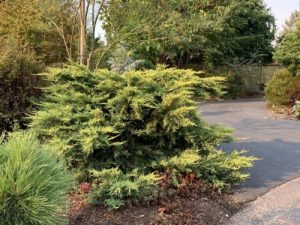
Juniperus communis (common juniper) is a species of juniper that is native to Connecticut State. It is a shrub or tree growing to 12–20 m (40–67 ft), rarely 25 m (82 ft).
The leaves are needle-like, 2.5–3 cm long and 1 mm broad, green with an orange-red heart, and arranged spirally on the shoots; they turn yellow in autumn. The flowers are produced in rounded clusters 10–15 cm across at the end of twigs; they are white or very pale pink, turning brown before maturity. The fruit is a woody red berry 5–8 mm in diameter, maturing red.
5. Artemisia Filifolia (sand sagebrush)
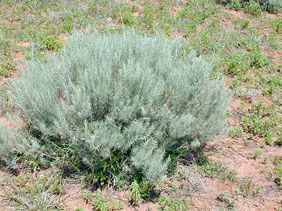
The Artemisia Filifolia plant is a low-growing shrub native to Connecticut State. It is typically found in arid or disturbed areas and has a very low tolerance for salt and sodium. It’s an annual in colder climates and blooms in early summer.
Artemisia Filifolia is commonly used as an ornamental plant for its large green leaves that surround the flower heads, which are small and yellow. The flower heads usually grow quite close together so that at least one head per branch remains open at all times.
The Artemisia Filifolia plant is hardy in many areas such as deserts or other dry places where no water exists year-round.
6. Arctostaphylos Uva-ursi (Bearberry)
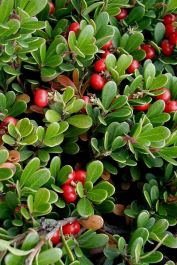
Arctostaphylos uva-ursi, often called bearberry by herbalists, is a small evergreen tree that grows up to two meters in height. Its leaves are oval-shaped and serrated, with a pointed end. The flowers are small and greenish-white in color. The berries of the Arctostaphylos uva-ursi plant are very small in size with a waxy coating on them.
The Arctostaphylos uva-ursi plant is native to North America, where it can grow in sandy soils or on rocky ground at high altitudes where the air is often too thin for anything else to grow.
In traditional herbal medicine, Arctostaphylos uva-ursi is used for bladder problems, colds or sore throats, and urinary tract infections. The berries are thought to be beneficial in removing skin eruptions, loosening the bowels, and removing excess phlegm from the lungs.
7. Spiral tomentose (steeplebush)
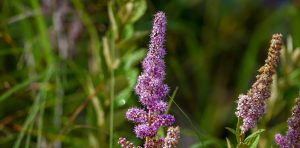
Spiral tomestosa, or steeplebush, is a woody evergreen shrub native to North America. It can be found growing in moist habitats and can grow up to three meters tall. It bears prickly oval and serrated leaves; the alternately arranged leaves are also covered with a dense coating of silky hairs.
Prickles cover the stems, branches, twigs, leaf stalks, and margins of younger plants. The prickles are both tactile and visual deterrents for herbivores – some animals will avoid eating anything with thorns or spikes on it.

